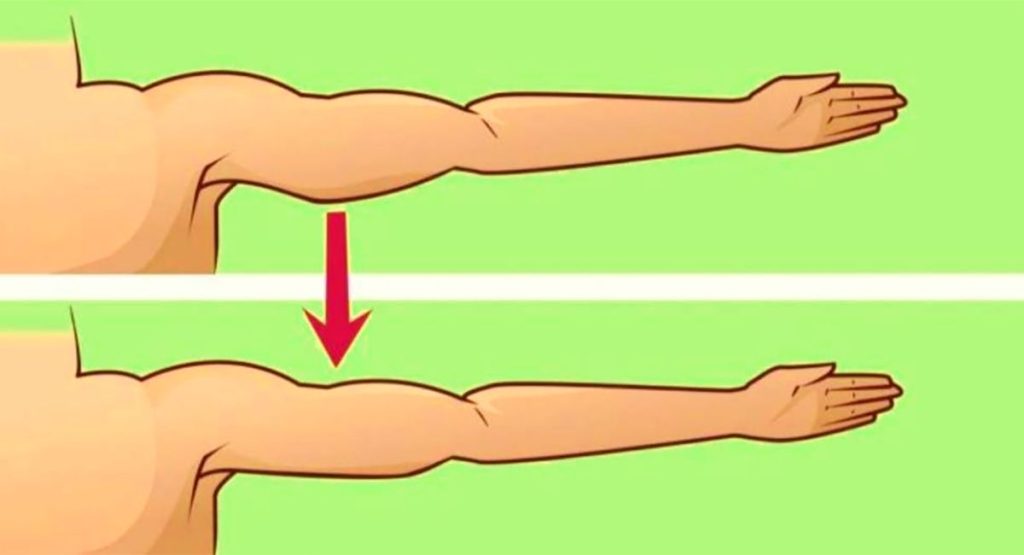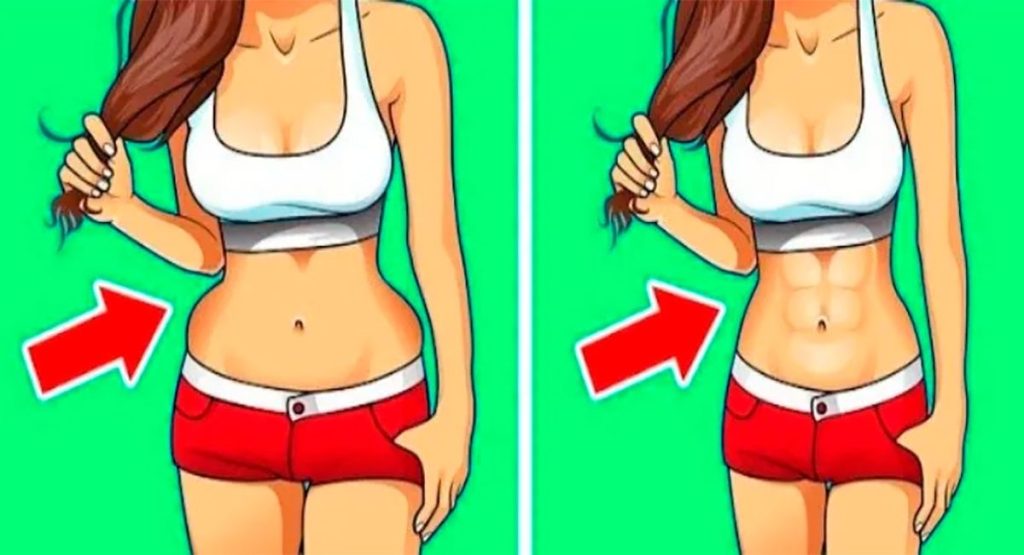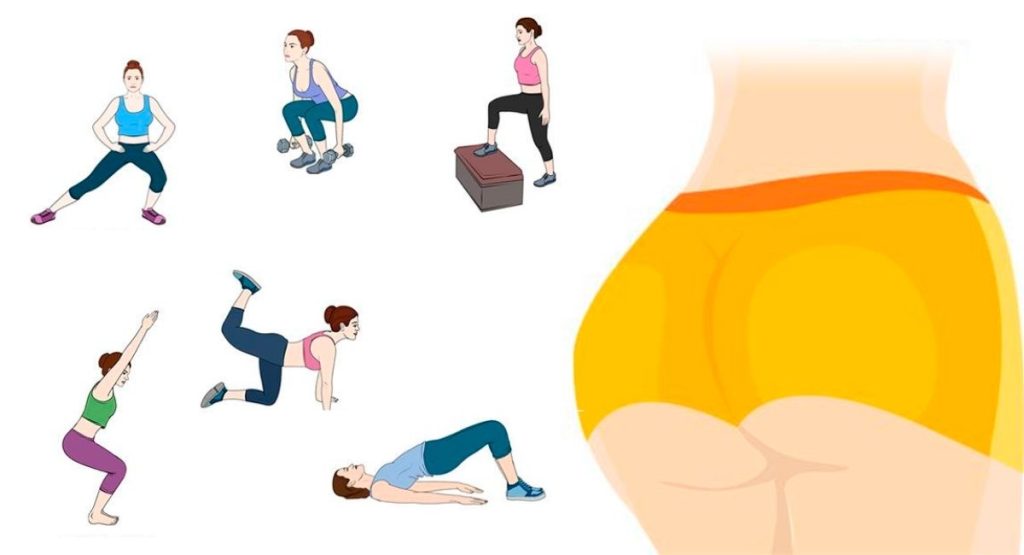When you first start exercising, it’s common to experience muscle tightness, or delayed onset muscle soreness (DOMS), as your muscles begin to adapt to being used in different ways.
The glutes are the largest muscle in the body and play an integral role in many functional movements such as squatting, walking, or climbing stairs.
That’s why it’s so important to activate your glutes during your warm-up and do glute stretches during your cool-down after completing your workouts.
Having tight glutes can be the result of a hard leg workout, but it can also be a sign that you’re sitting too much.
If you spend your day sitting at a desk, try standing up and walking around every 30-60 minutes to prevent your glutes from becoming sore. Adding glute exercises to your workouts can also help keep these muscles active and strong.
Why do glute stretches?
Stretching regularly is another way to prevent glutes from becoming inactive and tight. Glute stretches can improve hip rotation and help with walking, running, and descending stairs.
If you have pain or tension in your glutes, pain or discomfort in your hips, tight hip flexors, lower back pain, tight hamstrings, knee pain, or pelvic discomfort, stretching your glutes can help.
How to stretch your glutes before a workout
Warming up before a workout is important, as it can help prepare your body for exercise and minimize the risk of injury. Warming up typically consists of dynamic stretches that help improve blood flow and increase range of motion in the targeted area.
Here are some of the best ways to stretch and warm up your glutes before starting a workout:
Foam bearing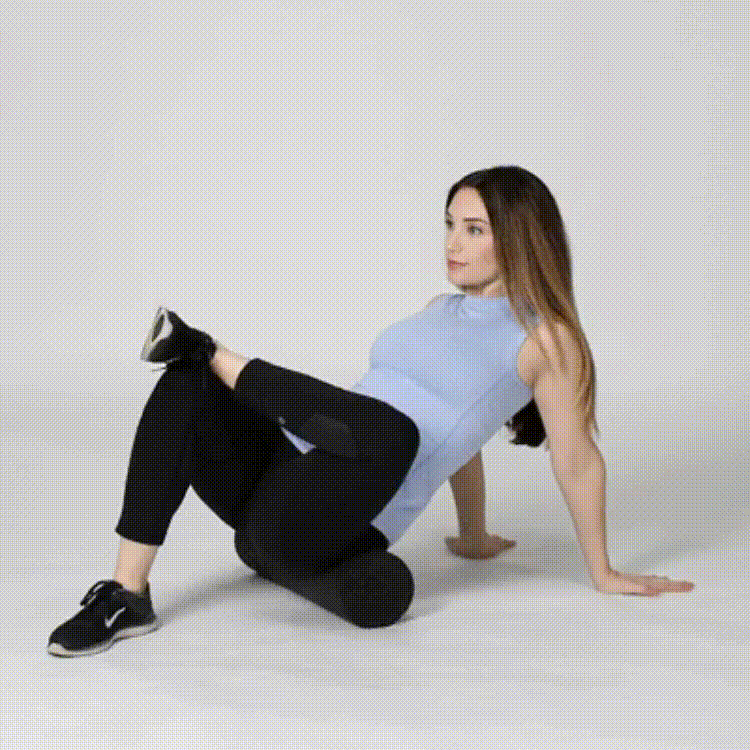
Foam rolling is often an important part of muscle recovery, but it can also help warm up your glutes before exercise by increasing blood flow to the area and loosening connective tissue around the muscles to allow for smooth movement.
Place the foam roller horizontally behind you. Carefully sit on top of the foam roller and place both hands on the floor behind you.
Lift and rotate your right leg so that the ankle rests on your left leg just above the knee, as shown. Gently tilt your hips to the right to allow the foam roller to press against your right glute.
Slowly roll the foam roller along your glute. When you reach a tender spot (called a trigger point), pause and hold for about 60 seconds, or until the pressure/pain significantly reduces. If you prefer, you can tap the tender spot.
Continue rolling along your glutes, pausing at trigger points as needed.
Repeat on the left side.
Leg swing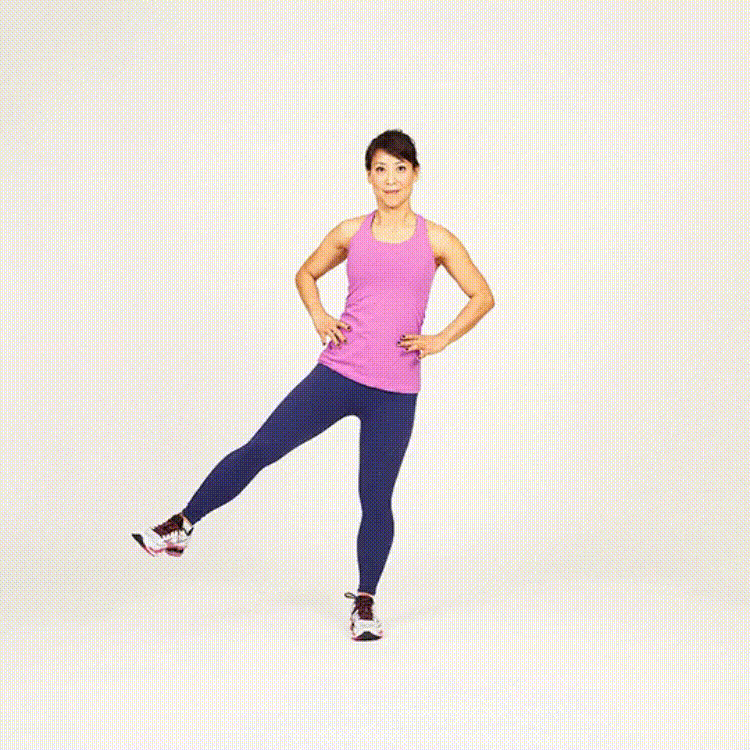
Leg swings are great for warming up your glutes and hips. You can use them before a workout, or to warm up your muscles for a deep stretch.
Plant both feet on the floor, hip-width apart.
While keeping your left foot firmly planted on the floor and your right leg straight, swing your right leg forward, making sure your torso remains upright.
Swing your right leg forward, directly in front of your body, and once again, make sure your torso remains upright.
Continue swinging your leg back and forth before switching sides.
Lateral walk with resistance band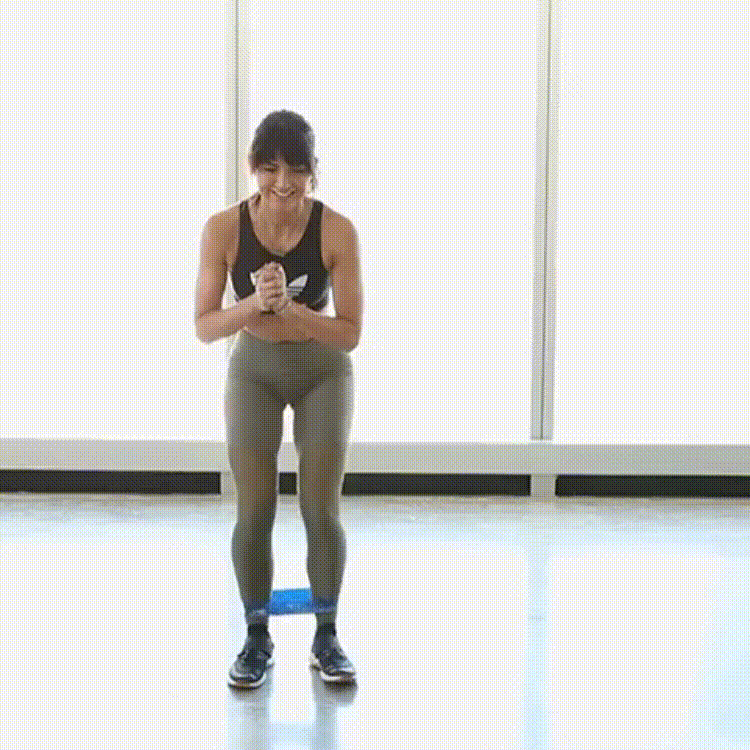
With a resistance band looped around your lower thighs, place both feet on the floor hip-width apart, ensuring your knees remain aligned with your toes. Looking straight ahead, bend your hips and knees, ensuring your knees remain aligned with your toes. Continue bending your knees until your upper legs are parallel to the floor. Make sure your back remains at a 45- to 90-degree angle to your hips. This is the starting position.
Inhale.
Exhale. Maintaining a squat position with your right foot on the floor, step your left foot outward so that your feet are slightly shoulder-width apart.
Inhale. Maintaining a squat position with your left foot on the floor, step your right foot inward to return to the starting position.
Glute bridge
The glute bridge exercise benefits many muscles, including the hamstrings, lower back, and abs, in addition to the glutes. The pose can be performed using just a mat, or you can loop a resistance band just above your knees to increase the intensity.
Lie on your back with your knees bent and feet flat on the floor.
Lift your hips off the floor so your body forms a straight line from your shoulders to your knees.
Pause when you’re in this position and then slowly lower your body to the floor.
Seated hip abduction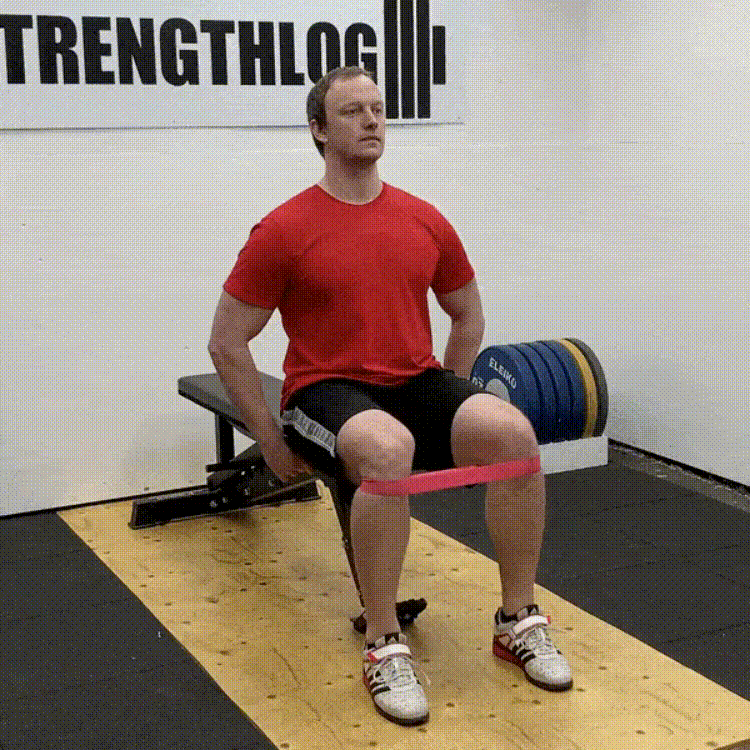
The hip abductors work alongside the glutes to assist with standing, walking, and leg rotation. When working your glutes, it’s important that these muscles are also active and working to stabilize your hips.
With a resistance band looped around your lower thighs, sit on a bench with your feet on the floor slightly hip-width apart. Lean back and place your hands on the bench behind you. This is the starting position.
Using your glutes and hips, separate your knees and feet until they are slightly wider than shoulder-width apart.
Draw your knees and feet inward to return to the starting position.
The best glute stretches for recovery
After your workout, take five minutes to cool down and stretch to minimize post-workout tension. The following stretches can be used during a cool-down or during a dedicated recovery session.
Half dove
This pose stretches the hip rotators and flexors, as well as the glutes.
Place both hands on the floor, slightly shoulder-width apart, and both legs together behind you, resting on the balls of your feet.
Release your left leg, bend your knee, and place it behind you and to the left of your left wrist. Rest your left shin on the mat, making sure your foot remains flexed. At the same time, place your right knee on the mat, lift your toes, and lower your hips toward the floor. Maintain the upright position.
Hold this position for 30 seconds (or five slow breaths). Each time you exhale, sink your hips deeper to increase the stretch, making sure your hips remain level.
Repeat this stretch on the other side.
Standing glute stretch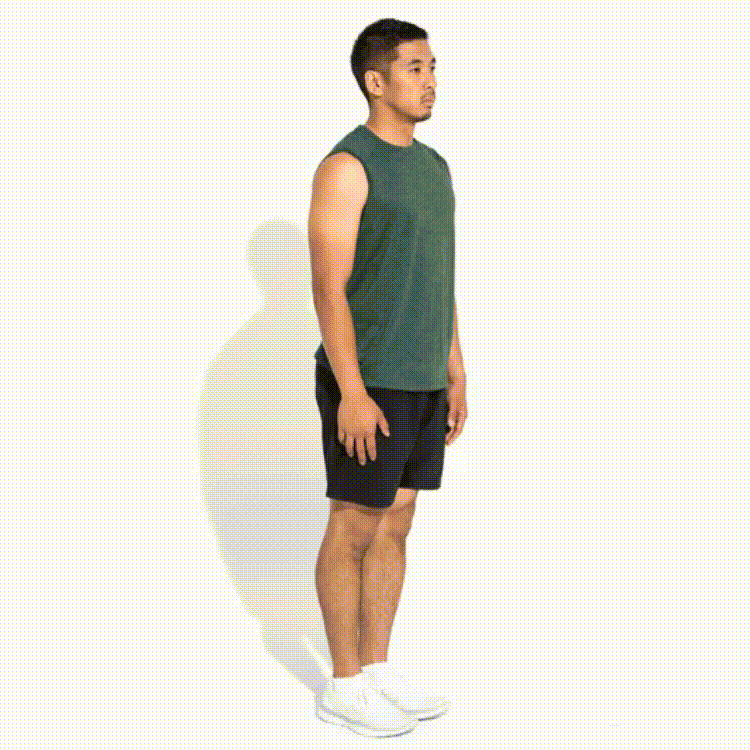
This stretch targets the gluteus maximus muscle to release tension.
Place both feet on the floor, shoulder-width apart.
Lift and rotate your left leg. Place the outside of your left ankle just above your right knee.
Bend your right knee so you’re in a one-legged squat position and gently push your left knee down using your left elbow.
Hold this position for 30 seconds (or five slow breaths), breathing deeply throughout.
Repeat this stretch on the other side.
*If you struggle with balance, try focusing on a spot directly in front of you. You can also find a bench or ledge at hip height to rest your leg on to perform the stretch and improve your balance.
The seated version of this standing glute stretch can be performed by placing your left ankle on your right knee and leaning forward through your chest.
Supine Glute Stretch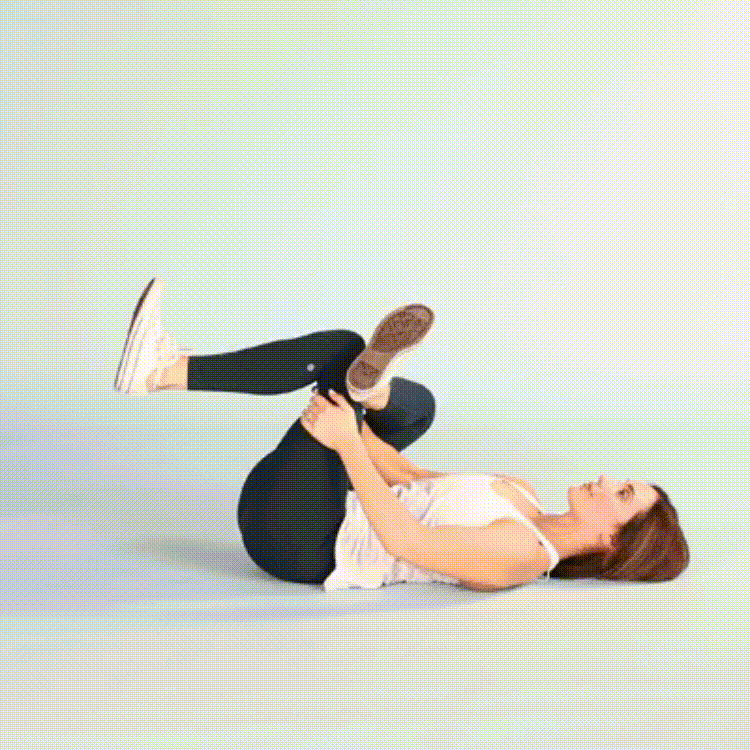
This stretch helps increase hip flexibility by stretching the glutes.
Start by lying on your back on a yoga mat. Bend your knees and place your feet firmly on the mat, making sure they are hip-width apart and your spine is in a neutral position.
Release and rotate your right leg so that your ankle rests on your left leg, just above your knee.
Bring your left knee toward your torso, resting both hands on the back of your left thigh.
Hold this position for 30 seconds (or five slow breaths), breathing deeply throughout.
Each time you exhale, bring your knee toward your chest and press your right elbow into your right knee to deepen the stretch, making sure your spine remains neutral and your tailbone on the floor.
Repeat this stretch on the other side.
Seated glute stretch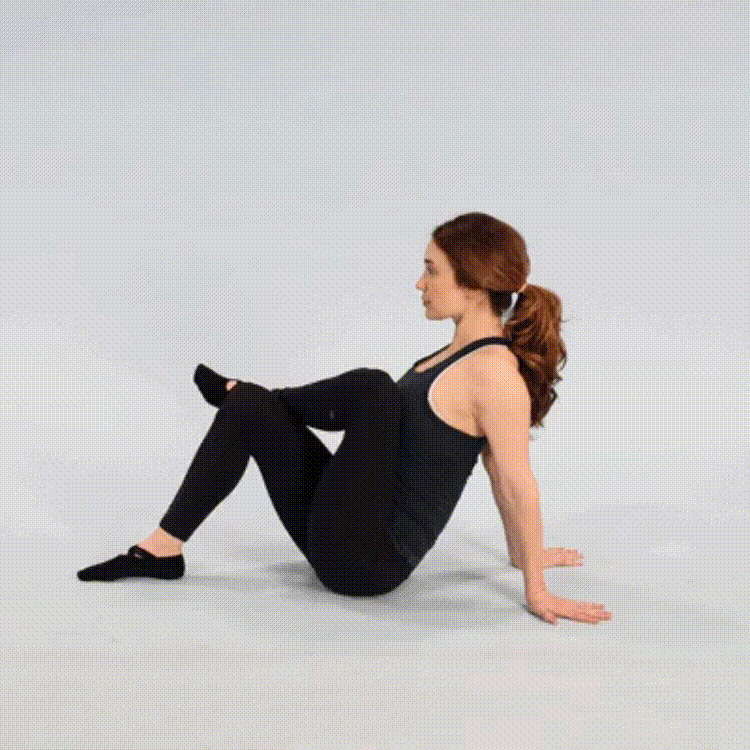
Like the previous stretch, this stretch helps improve flexibility and release tension in the gluteal muscles.
Start in a seated position on a yoga mat with your legs extended in front of you, feet flat on the mat. Press your hands and feet into the floor to raise your hips. Lift your right leg and rotate your right knee to place your ankle on your left leg just above the knee.
Slowly lower your hips to return to a seated position.
Hold this position for 30 seconds (or five slow breaths), breathing deeply.
Repeat this stretch on the other side.
Why so many different glute stretches?
The glutes are made up of more than one muscle. The largest, and the one that shapes the glutes, is the gluteus maximus.
The next largest is the gluteus medius, which helps you lift your leg to the side and rotate it. It also stabilizes your leg when walking and running, so it’s important to keep it strong and in good condition.
The gluteus minimus stabilizes the pelvis and rotates the leg. Finally, the piriformis, located below the gluteus medius, connects the tailbone to the femur, assisting in hip rotation and flexion.
By combining several different stretches, you can ensure that you increase the flexibility of all four gluteal muscles.
Use these stretches to relieve tight glutes
Regular stretching is an essential part of a complete health and fitness routine. Not only does it help improve recovery after a workout, but it can also be a great stress reliever and an opportunity to calm your mind.
Do you have time to stretch regularly? Tell us how you incorporate stretching into your workout routine in the comments.
